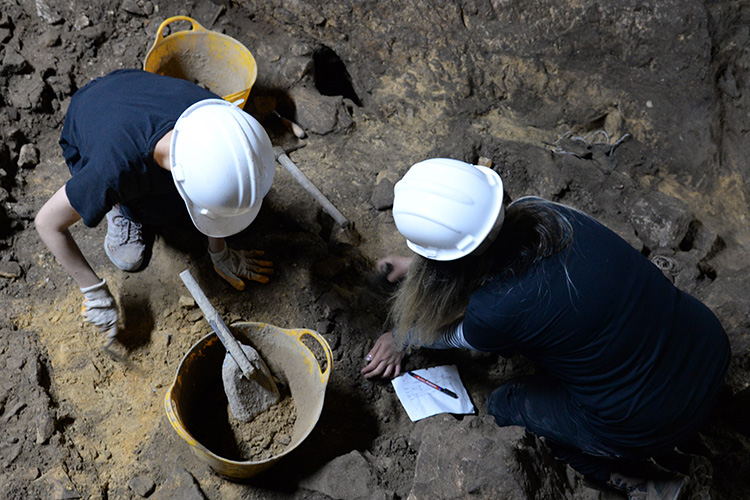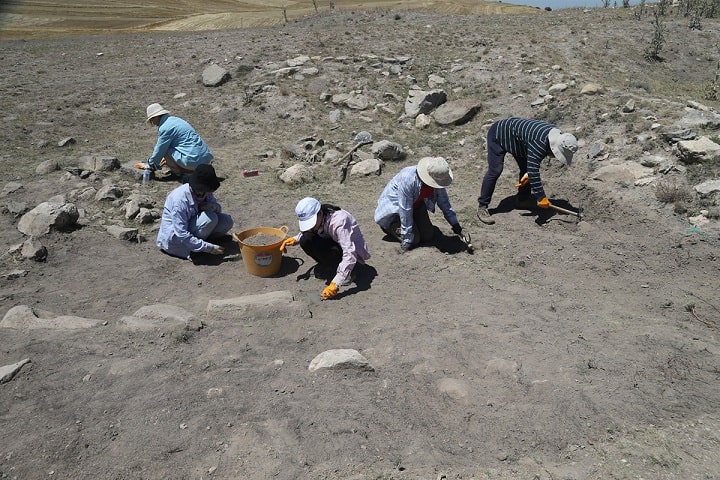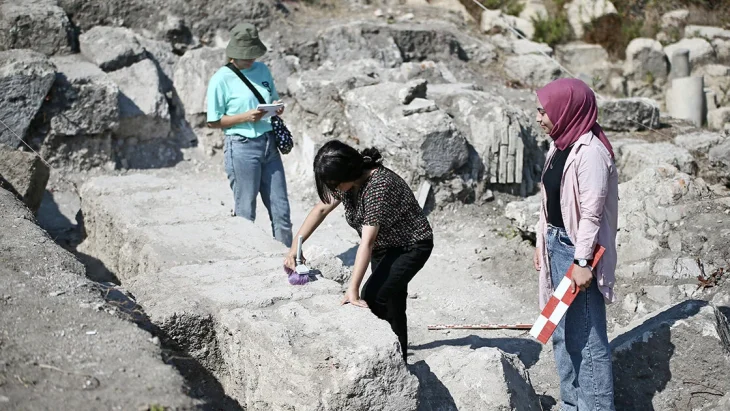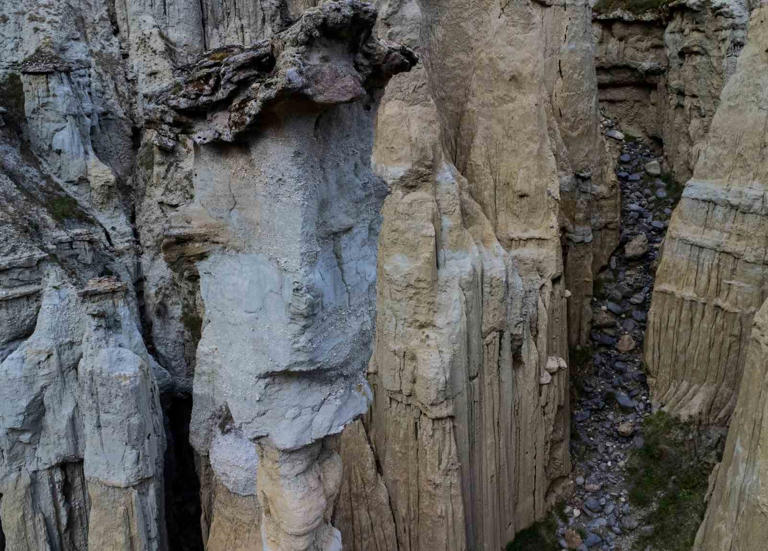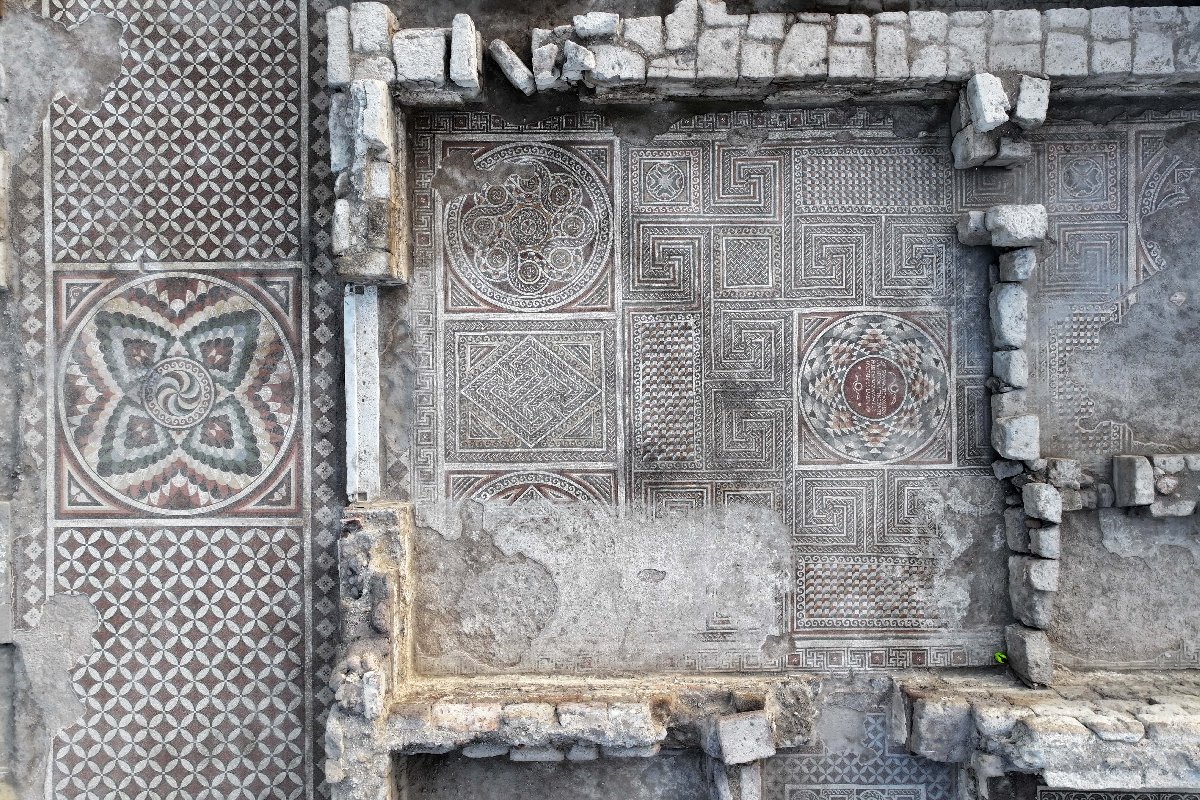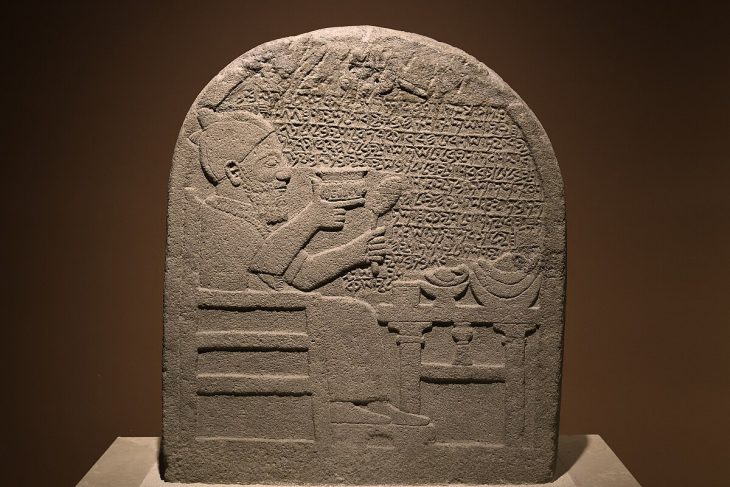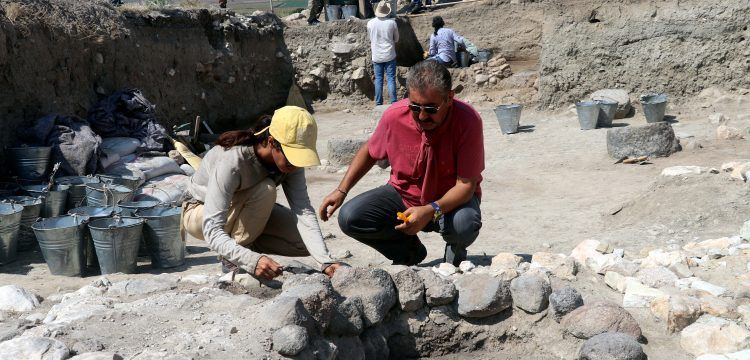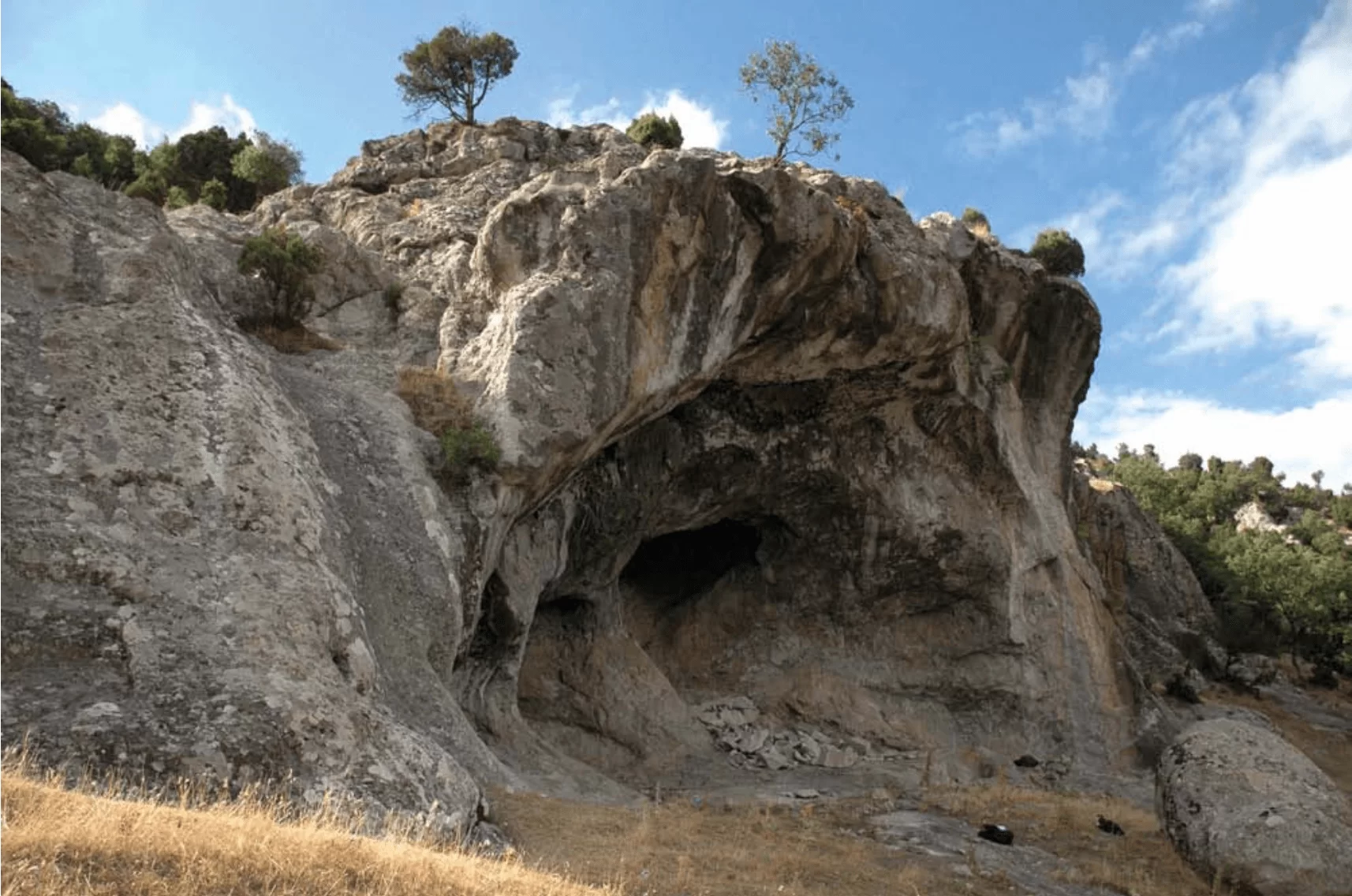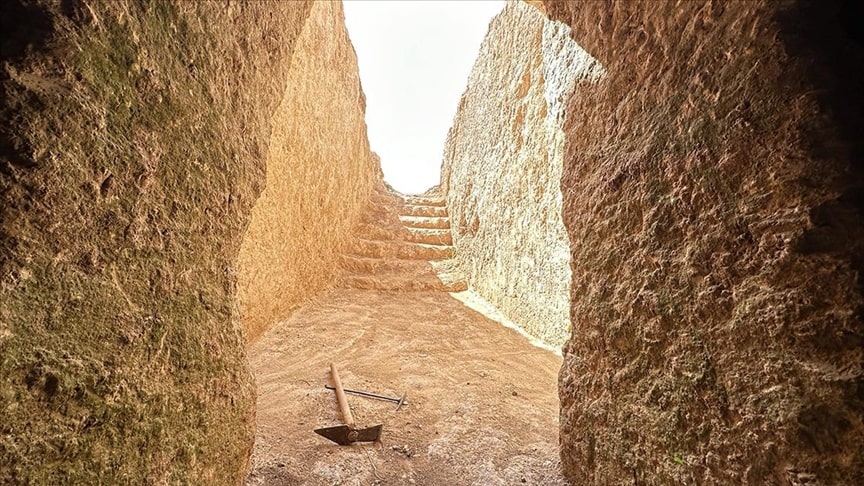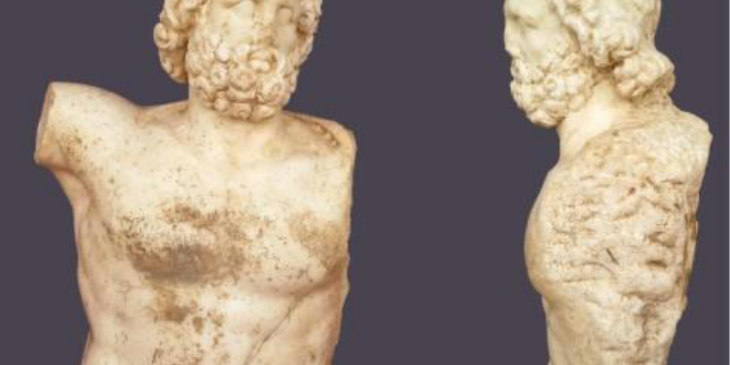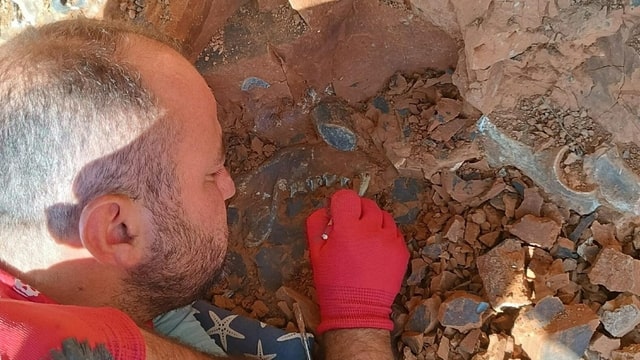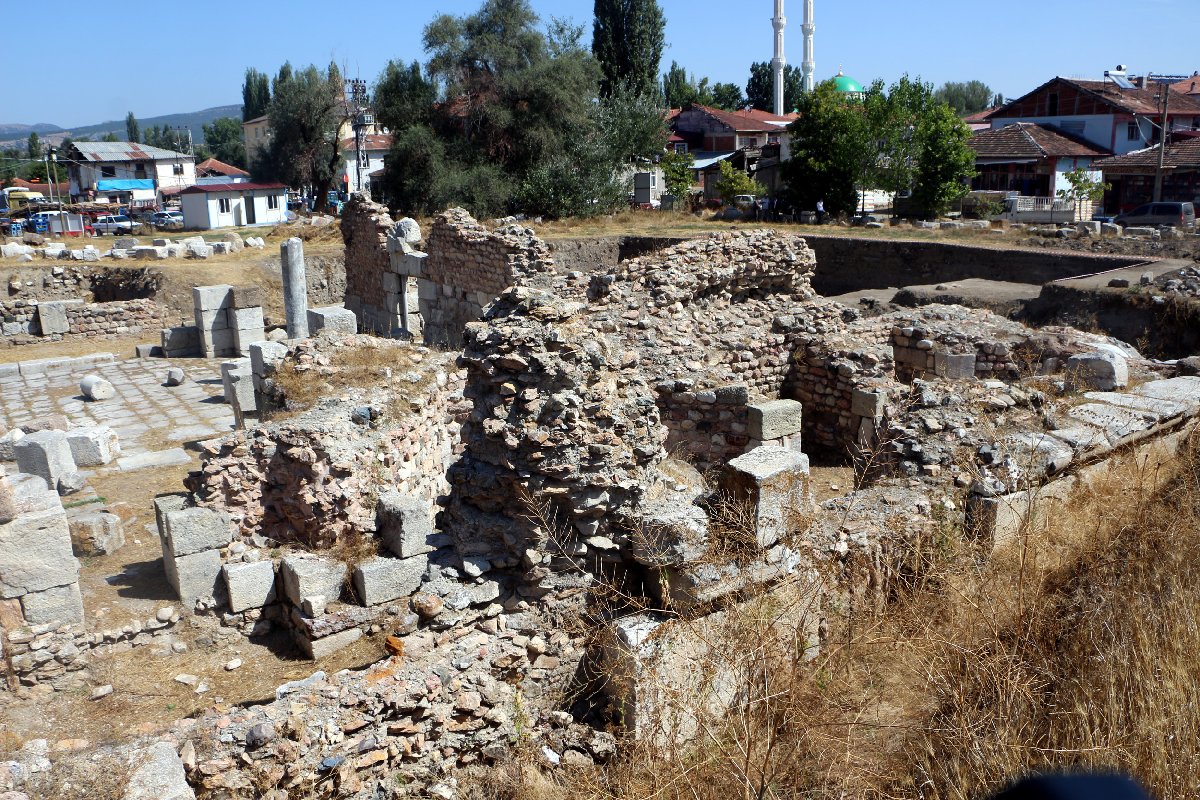In the rescue excavation conducted in Gedikkaya Cave in the İnhisar district of Bilecik, a 14,500-year-old offering pit was discovered.
Traces of life were found in two sections of Gedikkaya Cave, both upper and lower.
The rescue excavations are being carried out under the scientific guidance of Assoc. Prof. Dr. Deniz Sarı from the Department of Archaeology at Bilecik Şeyh Edebali University.
In the area where the 14,500-year-old offering pit was discovered, various bone tools such as flat adzes made of diorite (a type of rock), chisels, grinding and hand stones, blades (stone chips), scrapers, arrow and spearheads, pigments for tattooing, awls, perforated ceramics (pottery), needles, borers, and a mixing tool made of malachite, as well as a nugget of malachite and beads, were unearthed.
Furthermore, significant information related to craftsmanship such as stone and woodwork, mining, and weaving was also obtained in the cave.

In the cave, marble jar fragments, architectural remnants associated with the Aegean world, stone rows added in accordance with existing bedrock and limestone blocks, and living units created with clay lumps, silos, and quarry locations were discovered. Lastly, an offering pit dating back to the Epipaleolithic Period, around 14500 BC, was identified in the cave.
Bilecik Museum Director Harun Küçükaydın told AA correspondent that radiocarbon analyses have revealed that the earliest human traces in the cave date back to 16,500 years ago. He also mentioned that numerous findings dating from around 7000 to 5000 BC have been discovered.
Küçükaydın, stating that they have reached significant findings in the excavation, continued as follows:
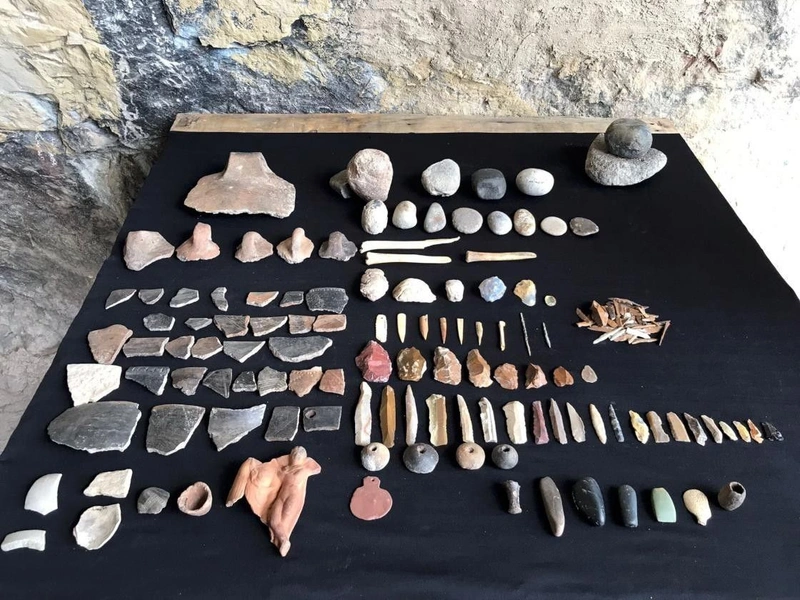
“One of these findings is the offering pit uncovered in the main cave chamber. Within this offering pit, a partially worked column has been revealed. We can associate this column with the Near Eastern Neolithic cultures. The stone figurine, stylized as a seated human figure found in the offering pit, forms a link between the known ‘Venus figurines’ from the European Upper Paleolithic cave art and the ‘mother goddess’ figurines from Anatolian Neolithic cultures.”
Küçükaydın also provided information that in the Gedikkaya region where the cave is located, an area of approximately 500 hectares, early humans sustained their livelihood through hunting and gathering.

The scientific advisor to the excavation, Assoc. Prof. Dr. Deniz Sarı, stated that the first settlement in the cave, which corresponds to the end of the Ice Age, was dated to around 14,500 to 13,500 BC, and that only a very limited portion of this period has been uncovered.
Sarı explained that they have determined the earliest findings obtained from the Gedikkaya Cave to date back to around 16,500 years ago, during a period about which we have very limited knowledge. He added:
“This period, about which we have very limited knowledge, was a time when the Upper Paleolithic cultures of Europe spread to the Balkans, the Caucasus, and the Mediterranean. Further excavations conducted in a wider area will provide more concrete data about Gedikkaya’s place within this spread and the prelude to human mobility at the end of the Ice Age.
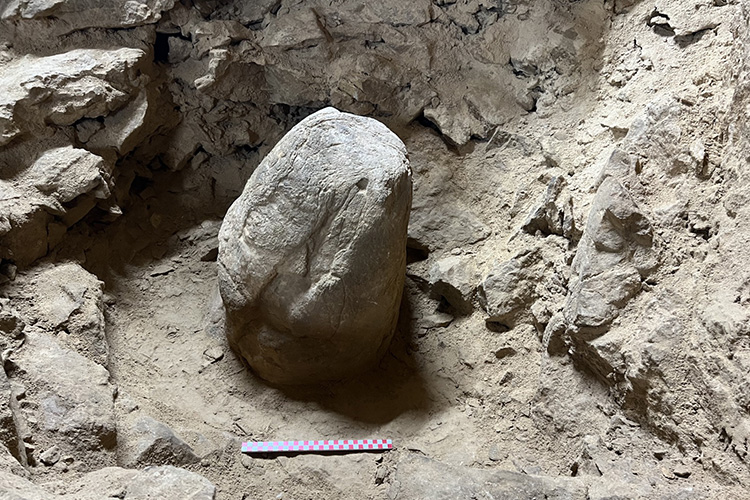
In 2022, related to this period, we unearthed an offering pit in the cave. The pit is surrounded by stone rows in a crescent shape, and within the pit, we uncovered a naturally formed column. The column has been partially worked to give it the appearance of a stele. The pit was likely closed off at a later time. The findings within the pit are extremely significant and contain very new and unusual data for prehistoric archaeology. One of these findings is a stone figurine. The stylized seated figurine depicts legs spread apart, characteristic of stone figurines that represent a mother goddess, which is typical of the Near Eastern Neolithic cultures. In this context, the work in the cave will contribute new insights to the literature in the context of Anatolian prehistoric archaeology.”

